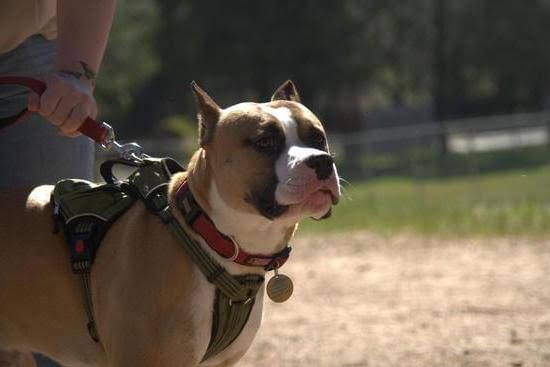Are you wondering “how to train my dog to stop attacking cats“? Understanding your dog’s behavior towards cats is the first step in addressing this issue.
Dogs are natural predators, and their behaviors towards smaller animals, such as cats, can be influenced by a variety of factors. In this article, we will delve into the different aspects of your dog’s behavior towards cats and provide you with valuable insights on how to address and modify these behaviors through training.
Identifying triggers and behaviors in your dog is essential in addressing their aggression towards cats. By understanding the specific cues and signals that lead to aggressive behavior, pet owners can better manage and modify their dog’s responses. We will explore the common triggers that may provoke a dog to attack a cat, as well as the various warning signs that indicate aggressive intentions.
The importance of early socialization and training cannot be emphasized enough when it comes to modifying your dog’s behavior towards cats. Early exposure to cats and positive experiences can significantly impact a dog’s attitude towards them.
Additionally, incorporating positive reinforcement training techniques can help reshape your dog’s response to cats in a more favorable manner. Throughout this article, we will offer valuable tips and strategies for pet owners looking to mitigate their dog’s aggressive tendencies towards felines.
Identifying Triggers and Behaviors in Your Dog
Before you can effectively train your dog to stop attacking cats, it is crucial to first understand their behavior towards felines. Dogs may show aggression towards cats for a variety of reasons, including fear, prey drive, territorial instincts, or lack of socialization. By paying attention to your dog’s body language and triggers when they are around cats, you can gain valuable insight into their behavior.
Common triggers that may cause a dog to attack a cat include sudden movements, high-pitched meowing or hissing, running away from the dog, or even something as simple as a direct stare from the cat. It is important to closely observe your dog’s reactions in the presence of cats in order to identify these triggers and understand the specific behaviors they exhibit.
By recognizing these triggers and behaviors in your dog, you will be better equipped to develop a training plan that addresses their specific needs and challenges. This understanding will also help you tailor your approach to training and modify the environment to set your dog up for success.
| Triggers | Behaviors |
|---|---|
| Sudden movements | Barking or lunging |
| High-pitched meowing or hissing | Aggressive posturing |
| Running away from the dog | Chasing or nipping |
| Direct stare from the cat | Raised hackles or growling |
Importance of Early Socialization and Training
Early socialization and training are crucial in shaping your dog’s behavior towards cats. It is important to start socializing your dog at a young age, ideally between 3-14 weeks old, as this is the critical period for learning and forming positive associations. Here are some key reasons why early socialization and training are essential:
- Prevents Fear and Aggression: Early exposure to different animals, including cats, helps prevent fear or aggression towards them later in life.
- Promotes Positive Associations: Through early socialization, your dog can learn to see cats as friends rather than threats, leading to a harmonious relationship.
- Builds Confidence: Positive experiences with cats during the critical period can help build your dog’s confidence and reduce the likelihood of aggressive behavior.
To effectively socialize your dog early on, it is important to expose them to various environments, people, and other animals, including cats. This exposure should always be positive and gradual to avoid overwhelming your dog. Additionally, enrolling in puppy classes or working with a professional trainer can provide guidance on proper socialization techniques.
Remember that every positive interaction with a cat during this critical period contributes to shaping your dog’s future behavior. By prioritizing early socialization and training, you are laying the foundation for a peaceful coexistence between your dog and cats in the long run.
Positive Reinforcement Training Techniques
What Is Positive Reinforcement?
Positive reinforcement is a training technique that involves rewarding your dog for exhibiting the desired behavior. This can be done through treats, praise, or toys, and helps to encourage the dog to repeat the behavior in the future. Instead of punishing unwanted behaviors, positive reinforcement focuses on acknowledging and rewarding the good ones.
Implementing Positive Reinforcement for Cat Training
When training your dog to stop attacking cats, positive reinforcement can be a powerful tool. Start by teaching your dog basic commands such as “sit” and “stay”, and reward them with treats or praise when they comply. Once they have mastered these basic commands, you can move on to specific behaviors around cats, such as “leave it” or “gentle”. Whenever your dog shows calm and non-threatening behavior towards cats, make sure to reward them immediately.
Avoiding Punishment and Negative Reinforcement
It’s important to note that using punishment or negative reinforcement techniques when training dogs around cats can often have adverse effects. This can lead to increased anxiety and aggression in dogs, making the situation worse. Instead, focusing on positive reinforcement allows for a more effective and long-term solution to prevent your dog from attacking cats.
Management and Environmental Modifications
When training a dog to stop attacking cats, it is important to make necessary management and environmental modifications in your home. This involves creating boundaries and safe spaces for both the dog and the cat.
For example, you can use baby gates or pet barriers to separate the two animals when necessary, allowing each of them their own areas within the home. Additionally, providing high perches or hiding spots for the cat can give them an escape route if they feel threatened.
Consider implementing changes in your home environment that can help reduce your dog’s potential for aggressive behavior towards cats. This may include removing toys or food items that are potential triggers for your dog’s aggression, and creating a calm and peaceful atmosphere with minimal stressors. By creating an environment that is conducive to positive interactions between your dog and cat, you can begin to train them to coexist peacefully.
It is also important to consider your dog’s physical needs in terms of exercise and mental stimulation. A well-exercised and mentally stimulated dog is less likely to exhibit aggressive behaviors towards other pets in the household. Engaging in interactive playtime, regular walks, and obedience training with your dog can help channel their energy in a positive way.
| Management Techniques | Environmental Modifications |
|---|---|
| Use of baby gates or pet barriers | Creating high perches or hiding spots for the cat |
| Removing potential triggers for aggression | Calm and peaceful atmosphere with minimal stressors |
| Daily exercise routines | Obedience training sessions |
Gradual Introduction and Desensitization to Cats
Understanding Your Dog’s Triggers and Reactions
Before you start the process of introducing your dog to cats, it’s important to understand your dog’s triggers and reactions. Some dogs may be reactive towards cats due to fear, past negative experiences, predatory instincts, or lack of socialization. By observing your dog’s body language and behavior around cats, you can gain valuable insights into what triggers their aggression or anxiety.
Creating a Safe Environment for Both Pets
When introducing your dog to cats, it’s crucial to create a safe environment for both pets. This may involve using baby gates or barriers to separate them initially while allowing visual access. Providing escape routes for the cat and a calm, positive atmosphere is essential for a successful introduction.
Gradual Desensitization and Counter-Conditioning
Gradual desensitization involves exposing your dog to cats in a controlled manner at a distance where they remain relaxed and non-reactive. Over time, as your dog becomes more comfortable with the presence of the cat, you can gradually decrease the distance until they are able to coexist peacefully in the same space.
Additionally, counter-conditioning techniques can be used to change your dog’s emotional response towards cats from negative to positive by pairing their presence with rewards such as treats or toys.
By following these steps and being patient throughout the process, you can help your dog overcome their aggression towards cats and build a positive relationship between them.
Seeking Professional Help and Guidance
When dealing with a dog that has a history of attacking cats, seeking professional help and guidance is crucial in ensuring the safety and well-being of both your dog and the cats in your household. A professional dog trainer or behaviorist can provide expert guidance, support, and a personalized training plan to address your dog’s specific behavior towards cats.
Here are some reasons why seeking professional help is important:
1. Specialized knowledge: A professional dog trainer or behaviorist has the expertise and experience in dealing with complex behavioral issues, such as aggression towards cats. They can assess your dog’s behavior, identify triggers, and develop an effective training plan tailored to your dog’s needs.
2. Customized training plan: Each dog is unique, and what works for one dog may not work for another. A professional can create a customized training plan that takes into account your dog’s temperament, history, and behavior towards cats. This tailored approach is essential for addressing the underlying causes of your dog’s aggression.
3. Support for the owner: Dealing with a dog that attacks cats can be incredibly stressful for owners. A professional can provide emotional support, advice on how to manage the situation safely, and guidance on implementing training techniques effectively.
When seeking professional help, it’s essential to choose a reputable and certified trainer or behaviorist who uses force-free, positive reinforcement-based methods. Avoid trainers who use punitive or harsh methods, as these can exacerbate aggression and cause harm to your dog. With the right support and guidance from a professional, you can work towards helping your dog overcome their aggression towards cats in a safe and effective manner.
Consistency and Patience
Training a dog to stop attacking cats requires a great deal of consistency and patience from the owner. It is important to understand that changing your dog’s behavior towards cats will not happen overnight, and it is crucial to be patient throughout the training process. Consistency in applying training techniques, as well as in managing the environment, is essential for success.
Consistency involves using the same commands, cues, and methods every time you work with your dog. This helps your dog understand what is expected of them and reduces confusion. Additionally, being consistent with the rules and boundaries set for your dog helps them understand what behaviors are acceptable around cats and which ones are not. It is also important for all members of the household to be consistent in their interactions with the dog to avoid any conflicting signals.
Patience is equally important when training a dog to stop attacking cats. Dogs learn at different paces, and some may take longer than others to change their behavior. It is essential for owners to remain patient and avoid becoming frustrated or losing their temper during training sessions.
Positive reinforcement techniques such as rewarding good behavior can help speed up the training process, but it still requires time and patience for the desired changes to become permanent. Remember that every small step towards progress should be celebrated, as this contributes to building a positive relationship between your dog and cats in the long run.
Importance of Supervision and Monitoring
As you work on training your dog to stop attacking cats, it is crucial to prioritize the importance of supervision and monitoring. This means keeping a close eye on your dog’s behavior at all times, especially when they are around cats. Even if you believe that your dog has made progress in their behavior, it is important to continue supervising their interactions with cats to ensure the safety of both animals.
Supervision and monitoring also play a key role in identifying any triggers or warning signs that may lead to aggressive behavior towards cats. By staying vigilant, you can observe your dog’s body language, vocalizations, and overall demeanor when they are in the presence of a cat. This awareness will allow you to intervene quickly if you notice any concerning behaviors, preventing any potential confrontations between your dog and the cat.
In addition to supervision, it may be necessary to utilize management techniques to control the interactions between your dog and cats. This could include using baby gates or other physical barriers to separate the animals when necessary. By implementing these strategies while also maintaining close supervision, you can create a safe environment for both your dog and any resident cats as you work towards improving their relationship.
Celebrating Small Victories
In conclusion, training a dog to stop attacking cats can be a challenging but achievable task with the right approach and techniques. It is important to understand your dog’s behavior towards cats and identify triggers and behaviors that may lead to aggression. Early socialization and training play a crucial role in shaping your dog’s behavior, as it helps them become more familiar and comfortable around cats.
Using positive reinforcement training techniques, such as rewarding good behavior and redirecting negative behavior, can be effective in altering your dog’s response to cats. Additionally, implementing management strategies and environmental modifications can help create a safe and controlled space for gradual introduction and desensitization to cats. Seeking professional help from a certified dog trainer or behaviorist can also provide valuable guidance and support in addressing aggressive behavior towards cats.
Consistency and patience are key elements in the training process, as building a positive relationship between your dog and cats takes time and effort. Celebrating small victories along the way, such as successful supervised interactions or reduced signs of aggression, is essential for reinforcing positive behaviors and fostering a harmonious relationship between your dog and cats.
Remember that supervision and monitoring are important for ensuring the safety of both your pets as they learn to coexist peacefully. With dedication, commitment, and the right approach, it is possible for dogs to overcome their instinctual urge to attack cats and instead build a positive relationship with them.
Frequently Asked Questions
Can Dogs Be Trained Not to Attack Cats?
Dogs can be trained not to attack cats through consistent and positive reinforcement training. It’s important to start with basic obedience commands like sit, stay, and leave it, then gradually introduce the dog to the presence of cats while rewarding calm and non-aggressive behavior.
This process may take time and patience, but with the right training approach, many dogs can learn to coexist peacefully with cats.
How Do I Get My Dog to Stop Terrorizing My Cats?
To get your dog to stop terrorizing your cats, it’s essential to address the root cause of the behavior. This may involve supervising interactions between your pets, providing separate spaces for each pet in your home, and seeking professional help from a certified dog trainer or animal behaviorist if needed.
Additionally, you can use positive reinforcement techniques to reward your dog for calm behavior around the cats.
Why Does My Dog Try to Attack Cats?
Dogs may try to attack cats due to a variety of reasons including predatory instincts, lack of socialization with cats during puppyhood, fear or anxiety around cats, or resource guarding behaviors. Identifying the specific trigger for your dog’s aggression towards cats is crucial in addressing the problem effectively.
Seeking guidance from a professional trainer or veterinarian can help you better understand and manage this behavior in your dog.

Welcome to the blog! I am a professional dog trainer and have been working with dogs for many years. In this blog, I will be discussing various topics related to dog training, including tips, tricks, and advice. I hope you find this information helpful and informative. Thanks for reading!





